The apartment in today’s post could not be more different from the John Saladino designed home posted last week. Instead of perfectly curated classicism, we have a wild riot of color and pattern. Temo Callahan’s New York apartment was featured in the November 2008 Domino and is one of those spaces that people either love to hate or absolutely adore. Callahan himself was a director of the legendary Clarence House fabric company in the 1980s and 90s. He left and launched Studio Printworks, a small art based wallpaper company. They commission artists and designers and make unique hand-printed papers. Check out their collaboration with artist Kiki Smith – it is amazing!
Callahan’s living room is covered in a wallpaper of one of their designs – Edo Pines – in a dramatic red colorway. Pines symbolize long life and happiness in Japan, so perhaps not a bad thing to have papering all your walls.
This living room has a little bit of everything! On the left there are typical Japanese lacquer tray tables stacked high, but they are done in a glossy modern white finish. In contrast, a polychrome Imari platter set in a tray table sits in the center of the room towards the back – something the design world seems to think of as kind of “grandma-ish”. The white iron garden chair has cushions upholstered in a Jed Johnson fabric called (coincidentally?) Kamakura in the Indigo colorway.
Callahan is quoted as saying “No one looks bad in a red room”. But I think I might consider some of the other Edo Pines colorways.
Robin’s Egg
Truffle
Dove
The bedroom, by contrast, is painted a dark soothing blue.
The headboard has been upholstered in the same fabric as the throw pillows on the living room couch to give the apartment a sense of continuity. The throw pillows on the bed look remarkably similar to a Japanese rayon shibori (tie-dye) fabric, but they are actually a very expensive linen/cotton from Jed Johnson called Medallion. (The Imperial colorway looks a bit darker in the swatch below).
Almost all the Asian blue and white porcelain seen in shelter magazines is Chinese, but this lamp is a converted Imari porcelain vase.
What I find so fascinating about it this apartment is the use of specifically Japanese patterns and objects (as opposed to Chinese for instance) as if he wanted to keep to a theme started by the wallpaper. With the preponderance of Chinese antiques and Chinoiserie readily available in the decorating world, it continues to be unusual to see Japanese items used. I really wonder if he did it on purpose.
And as a follow up to Tuesday’s post, Studio Printworks has a fantastic wallpaper called “Kiku Kamon” in eight different colorways. Here it is below in my favorite “raisin”.
I wonder what the Emperor would think of having his kamon on a wallpaper…
Image Credits:1,2,7 & 9 photographed by Paul Costello for Domino, 4-6 & 10 Studio Printworks, 3, 8 Jed Johnson Home

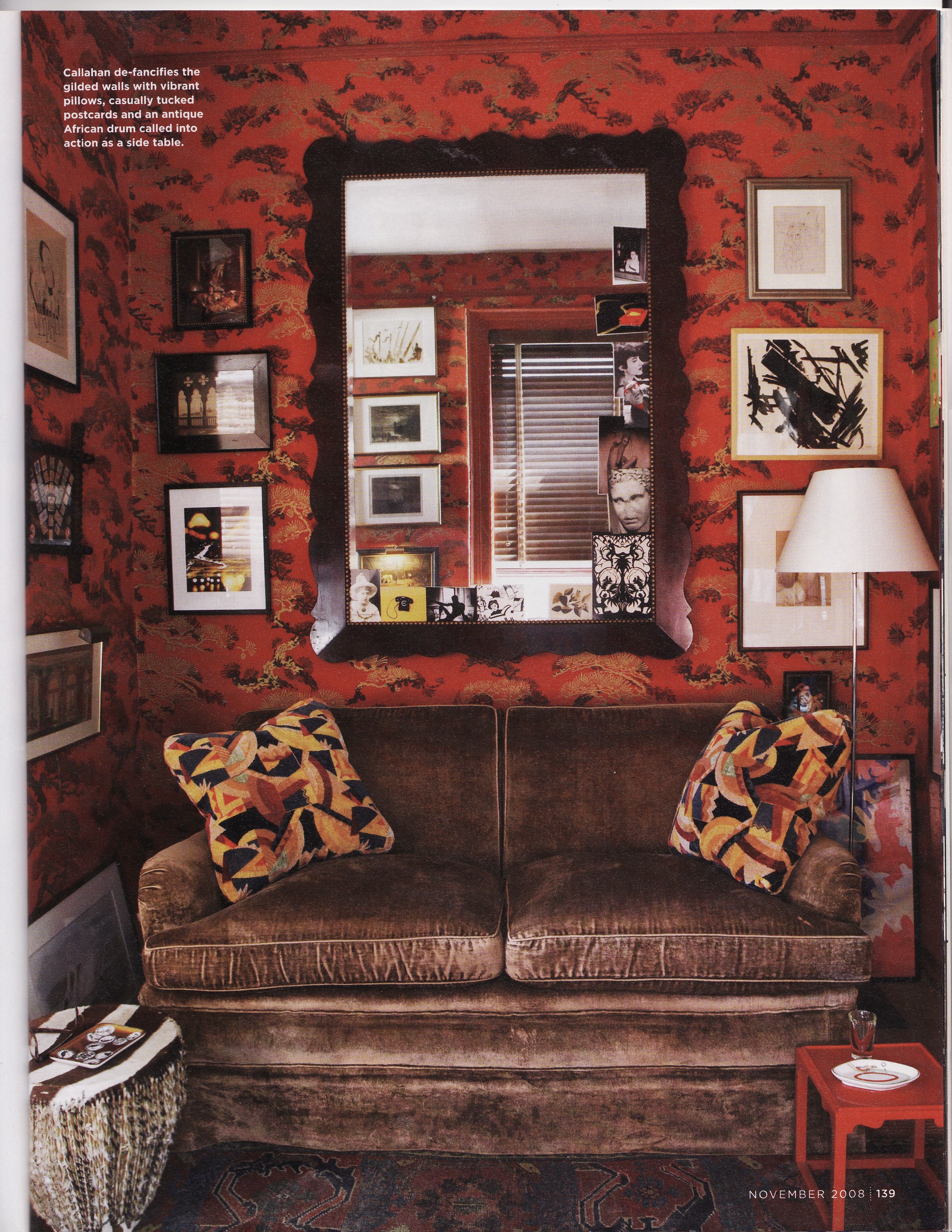

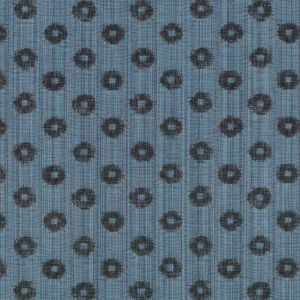
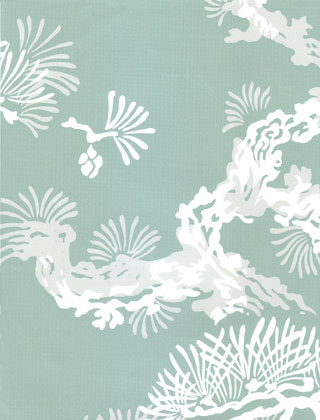
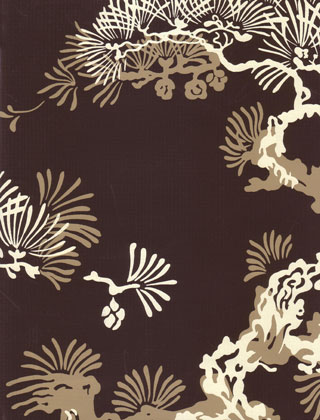
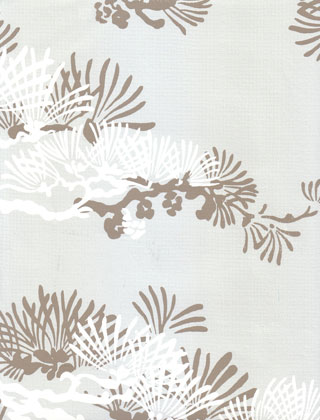

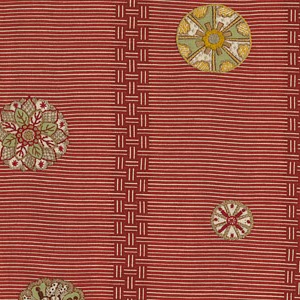
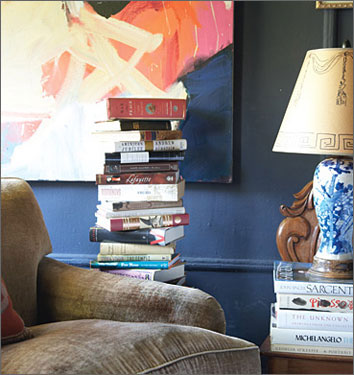
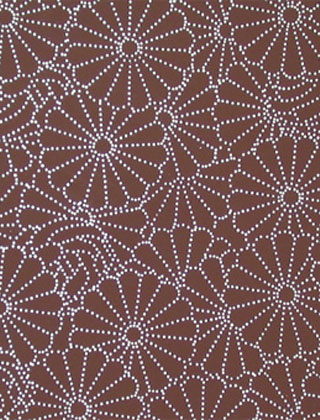
Lovely post!
Hmm, I was just searching for Temo’s contact information today on Google, trying to see if he heard from his sister after the Tornadoes in Alabama, and I came across this post. Cool apartment!! My husband and I had lunch with him in NYC in 2004, but haven’t kept in contact. Well, if he reads this, I left a message for Nancy… will keep trying to get a hold of her!!!!
So sorry that I don’t have any contact information for him. Did you check the Studio Printworks website? http://www.studioprintworks.com/